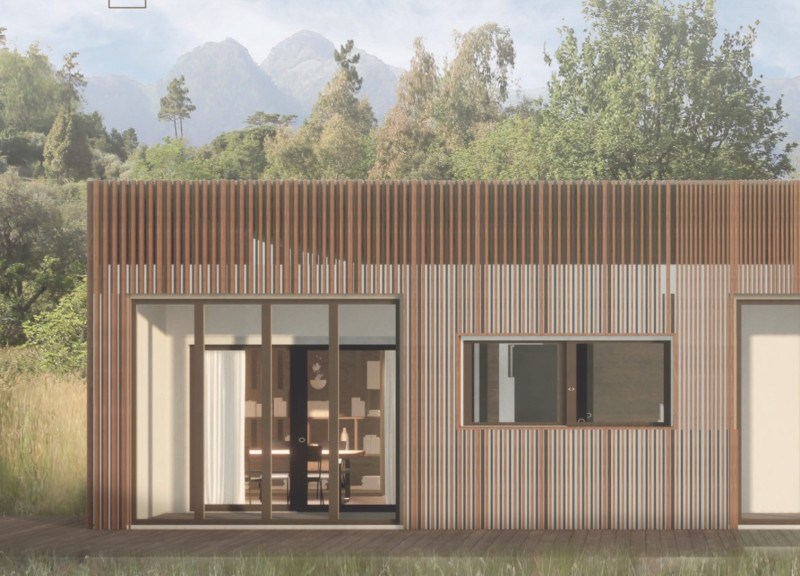5 key facts about this project
At its core, the project represents a shift towards a more sustainable way of living, marrying modern architectural principles with practical functionality. The design brings together a series of individual modules that can be configured in various arrangements to suit different lifestyles and family sizes. This modular approach not only facilitates construction but also enables future adaptability as needs evolve, making it an exemplary model for urban and suburban living.
The primary function of the Impluvium Project extends beyond mere shelter; it addresses the broader context of human interaction with the environment. Each module is carefully designed to optimize interior spaces, creating comfortable and versatile living arrangements. The architectural plans illustrate how these modules interconnect, forming cohesive living areas that promote both social interaction and individual privacy.
One of the standout aspects of the design is its commitment to sustainability through the thoughtful selection of materials. The use of cross-laminated timber panels ensures structural integrity while providing excellent insulation properties. Coupled with rockwool insulation, the project demonstrates a careful consideration of thermal performance, which is vital for energy conservation. Inside, MDF panels deliver a modern aesthetic and functionality, while gypsum fiber panels contribute to fire safety and durability.
The façade of the building further showcases unique design approaches. Wooden slats are employed effectively for cladding, allowing the structure to blend seamlessly into its natural surroundings while also promoting airflow. This choice enhances visual appeal without compromising on the climate's demands. The integration of photovoltaic panels signals a progressive commitment to renewable energy, significantly reducing the building's ecological footprint and operational costs.
Moreover, the project's design includes innovative solutions for rainwater harvesting, enhancing resource management. Natural ventilation features are strategically implemented to facilitate air circulation, minimizing reliance on mechanical cooling systems and promoting a healthier indoor environment.
In exploring the architectural sections of the Impluvium Project, one can appreciate the attention to detail in creating spaces that reflect a deep understanding of user experience. The interplay of various design elements ensures that each module not only serves its purpose but also fosters a sense of community and belonging. The careful consideration of light, space, and materiality illustrates a holistic approach to design that is both functional and aesthetically pleasing.
The Impluvium Project serves as a significant case study in contemporary architecture, emphasizing themes of sustainability, adaptability, and community. Its unique modular system aligns with modern living expectations, making it a relevant model for architects and designers interested in designing future homes that can adjust to changing contexts and needs.
For those interested in deeper insights into this architectural design, including specific architectural plans and detailed sections, it is encouraged to explore further. Understanding the nuanced architectural ideas behind the Impluvium Project could provide valuable inspiration for future design endeavors.


























